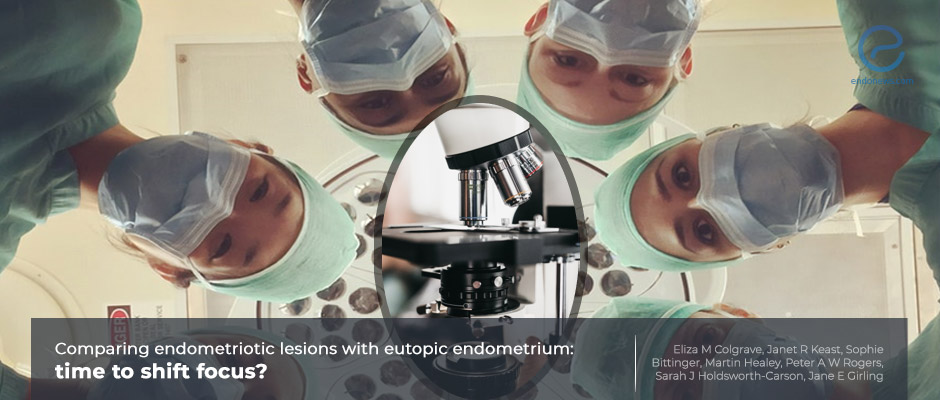Not all endometriotic lesions behave similar to the eutopic endometrium
Oct 6, 2021
The concept that all the endometriotic lesions undergo the same cyclic changes as eutopic endometrium is not always true.
Key Points
Highlight:
- Endometriosis lesions should be seen as separate, unique entities in order to maintain a better perspective into understanding the disease pathophysiology.
Importance:
- Current staging systems for endometriosis are limited and do not correlate well with treatment outcomes.
- To improve the current classifications, histopathological re-evaluation of endometriotic lesions may be helpful.
- Acknowledging eutopic and ectopic endometrium as different entities may help clinicians to improve patient outcomes.
Key results:
- The diversity of endometrial lesions make it hard to establish a histological classification.
- The ectopic endometrium may present in many phases of the cyclic endometrium, and not necessarily be synchronous.
- The endometriotic lesions may be heterogeneous even in the same patient.
- The histopathological appearance of endometriotic lesions may differ based on their location, gland/stoma ratio, and hormone expression profile.
- The response to steroid hormones is also different for each lesion depending on many variables.
What’s done here:
- This is an opinion article that brings together many research articles in the diagnosis, management, and treatment of endometriosis.
- The authors discuss the common opinion which hypothesizes that the ectopic endometrium and eutopic endometrium behave in concordance based on the menstrual cycle phases.
Lay Summary
The most widely accepted theory of endometriosis pathophysiology is Sampson’s theory of retrograde menstruation which suggests the ectopic lesions undergo the same hormonal and morphological changes as eutopic endometrium during the menstrual cycle. Recent studies have shown that only a proportion of endometriotic lesions follow this rule whereas others behave independently in terms of the changes during the menstrual cycle.
Dr. Colgrave and colleagues from Australia and New Zealand have published an opinion article in the September issue of the journal Human Reproduction, entitled "Comparing endometriotic lesions with eutopic endometrium: time to shift focus?". In their article, they discussed the characteristics and heterogeneity of endometriotic lesions with an emphasis on the histopathological features.
The current classification systems rely on surgical observations and/or fertility outcomes however their inability to predict treatment outcomes and symptom severity constitutes a major limitation. The authors argue that because the endometriotic lesions are diverse, it would not be easy to create a histological classification. Another issue that limits this thought is both the clinicians’ and the patients’ will to avoid surgical intervention.
The current literature groups endometriotic lesions into three distinct groups as superficial, ovarian, and deep endometriosis. They all have different histopathological appearances in terms of glandular, stromal, and vascular elements and the presence of fibrosis. The authors state that as recent studies have proven different endometriotic lesions may be heterogeneous even in the same patient, the approach to these lesions as identicals of eutopic endometrium should be discarded. There are studies that investigated the histopathological appearances of endometriotic lesions and there was both synchrony and discordance, and most studies stated that even though the menstrual cycle phases may be assigned to endometriotic lesions, this may not be possible for all.
The endometriotic lesions have different properties in terms of responsiveness to steroid hormones. This was mostly linked to progesterone resistance, local estrogen production, and the molecular differences in steroid hormone levels. This results in different treatment outcomes in patients. Superficial endometriosis lesions are prone to respond better to steroid hormones whereas deep infiltrating lesions are not. The authors also reported the hypothesis that endometriosis is a progressive disease however it is not possible to investigate this fully as it is impossible to track every lesion for a long time.
With this knowledge, the authors suggest that the idea and focus that the eutopic and ectopic endometrium behave parallel to each other should be shifted and the lesions should be acknowledged as separate, unique entities as there may be multiple different phenotypes depending on the microscopical appearance, the lesion’s response to steroid hormones and the symptoms that the patient suffers from.
Research Source: https://pubmed.ncbi.nlm.nih.gov/34535995/
endometriosis eutopic endometrium histopathology

